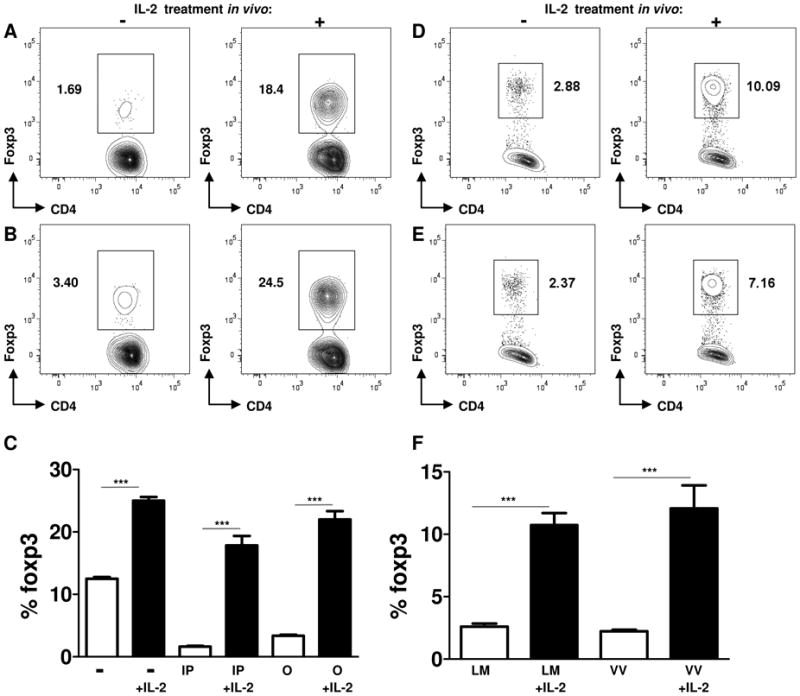Figure 5.

Exogenous IL-2 treatment during parasitic, bacterial, and viral infections prevented the loss of Treg cells
WT mice (n=5) were infected intraperitoneally (A) or orally (B) with T. gondii and additionally treated with IL-2 (1.5 μg of IL-2 plus 50 μg of anti-IL-2 antibody per mouse). The Treg cell frequency was analyzed by flow cytometry on day 7 post-infection. (C) Average frequency of Foxp3+ cells in the spleens of control (−), intraperitoneally (IP) or orally (O) infected mice treated with IL-2 plus anti-IL-2 antibody (+IL-2). The data shown are the mean ± SD. Animals were infected with (D) L. monocytogenes (104 CFU per mouse) or (E) vaccinia virus (106 PFU per mouse) and where indicated, were treated with exogenous IL-2 as described above. Treg cells were analyzed in IL-2 treated (+) and untreated (−) mice on day 7 post-infection. (F) The data shown are the mean frequency of Treg cells ± SD in L. monocytogenes (LM) or vaccinia virus (VV) infected mice. The data shown are representative of three independent experiments. *** P< 0.001.
